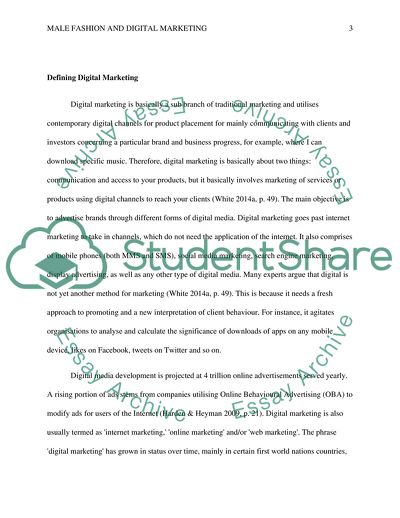Cite this document
(Male Fashion and Digital Marketing Coursework Example | Topics and Well Written Essays - 4250 words, n.d.)
Male Fashion and Digital Marketing Coursework Example | Topics and Well Written Essays - 4250 words. https://studentshare.org/design-technology/1869902-is-the-male-fashion-consumer-more-responsive-to-digital-marketing-social-media
Male Fashion and Digital Marketing Coursework Example | Topics and Well Written Essays - 4250 words. https://studentshare.org/design-technology/1869902-is-the-male-fashion-consumer-more-responsive-to-digital-marketing-social-media
(Male Fashion and Digital Marketing Coursework Example | Topics and Well Written Essays - 4250 Words)
Male Fashion and Digital Marketing Coursework Example | Topics and Well Written Essays - 4250 Words. https://studentshare.org/design-technology/1869902-is-the-male-fashion-consumer-more-responsive-to-digital-marketing-social-media.
Male Fashion and Digital Marketing Coursework Example | Topics and Well Written Essays - 4250 Words. https://studentshare.org/design-technology/1869902-is-the-male-fashion-consumer-more-responsive-to-digital-marketing-social-media.
“Male Fashion and Digital Marketing Coursework Example | Topics and Well Written Essays - 4250 Words”. https://studentshare.org/design-technology/1869902-is-the-male-fashion-consumer-more-responsive-to-digital-marketing-social-media.


